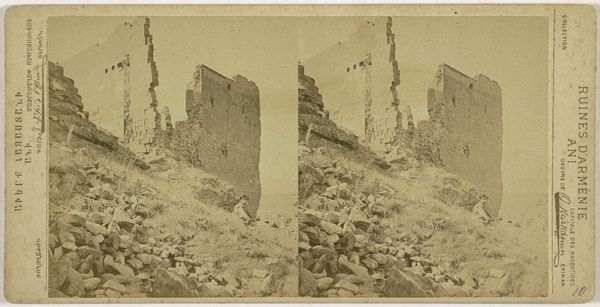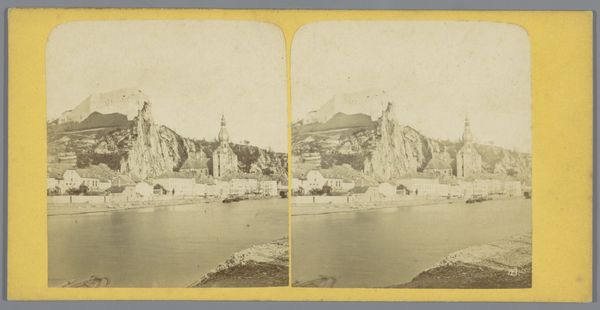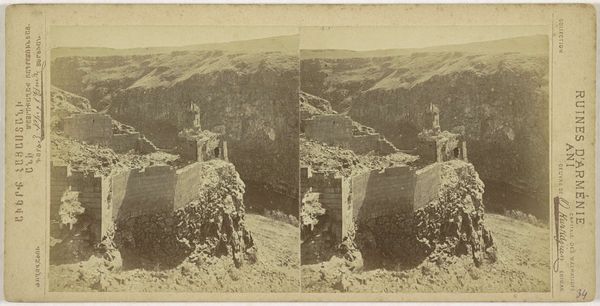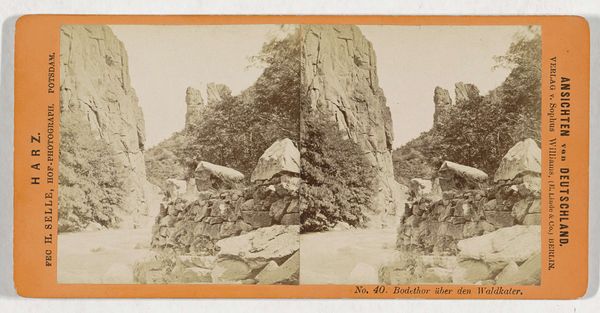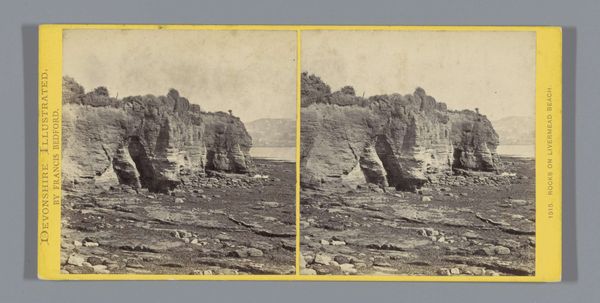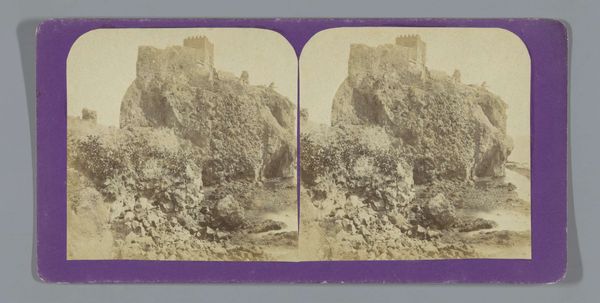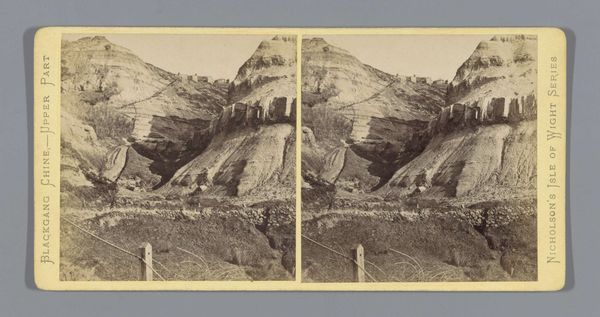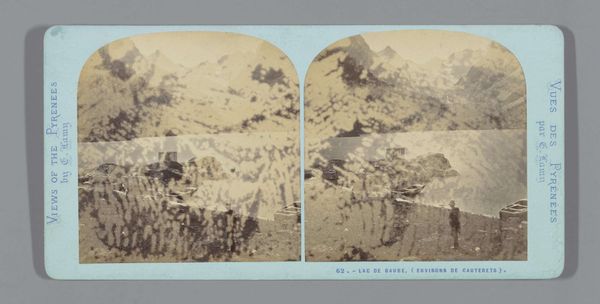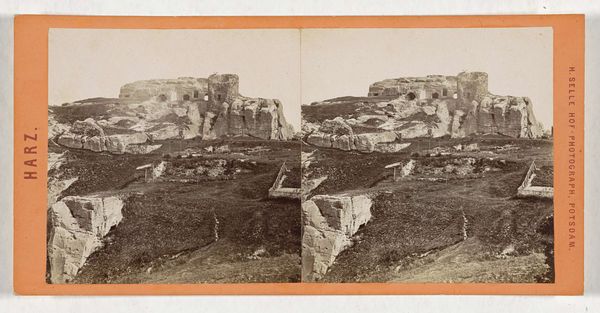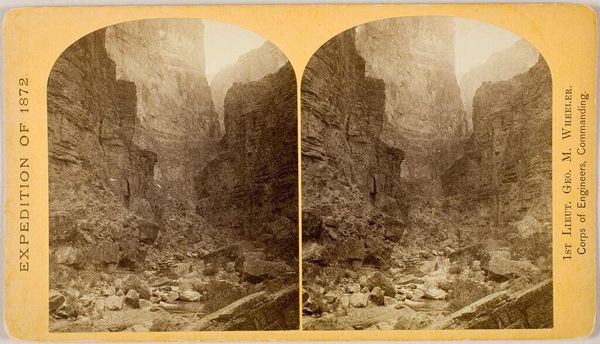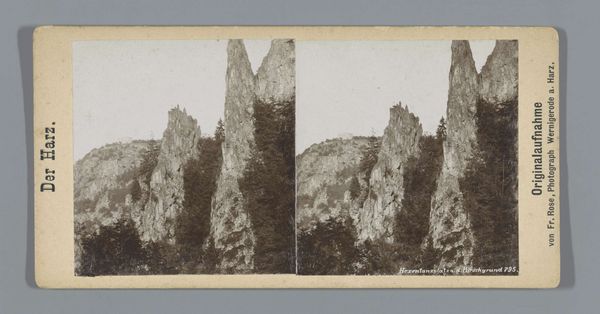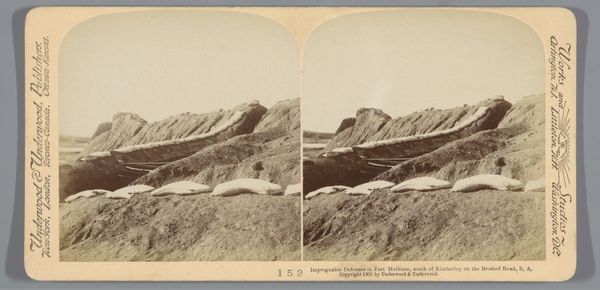
Dimensions: height 85 mm, width 170 mm
Copyright: Rijks Museum: Open Domain
Editor: Here we have "Rock Landscape with a Ruin near Bad Dürkheim," a gelatin silver print from circa 1860-1880 by Georg Lang. There's something so raw and textured about the rock face. What's striking to me is the physical endurance required to build on this landscape. What do you see in this piece? Curator: Precisely! Considering the materials used – gelatin silver, rock, and presumably stone for the ruin – we need to ask: What labour was involved? These gelatin silver prints required very specific chemical processes. The ruin speaks volumes too. Someone hauled those stones up there. Consider the consumption implicit in both activities. Someone had to provide the labourer's wages, clothes and food. How did this feed into a larger economy of exploitation? Editor: That's an interesting point about labor, it's not something that immediately jumps out when looking at a landscape photo. Are you suggesting that this image romanticizes what might have been harsh working conditions? Curator: Perhaps. We often see Romantic landscapes stripped bare of any trace of toil. Look closer at this photographic process, the very 'stuff' of its making. Consider how this Romantic ruin provided a living for those selling prints. Photography as commerce changed what artists did in their practice to serve this economic transformation. Editor: So, by focusing on the materials and production, you're revealing the hidden economic structures behind both the landscape and its photographic representation? Curator: Exactly! We see a picturesque scene, but it is one born of human exertion, chemical production, and, ultimately, capitalist exchange. Editor: I never thought about it that way before. Thanks for widening my perspective on this photograph. Curator: And thank you for pointing me toward new lines of inquiry in it as well.
Comments
No comments
Be the first to comment and join the conversation on the ultimate creative platform.
